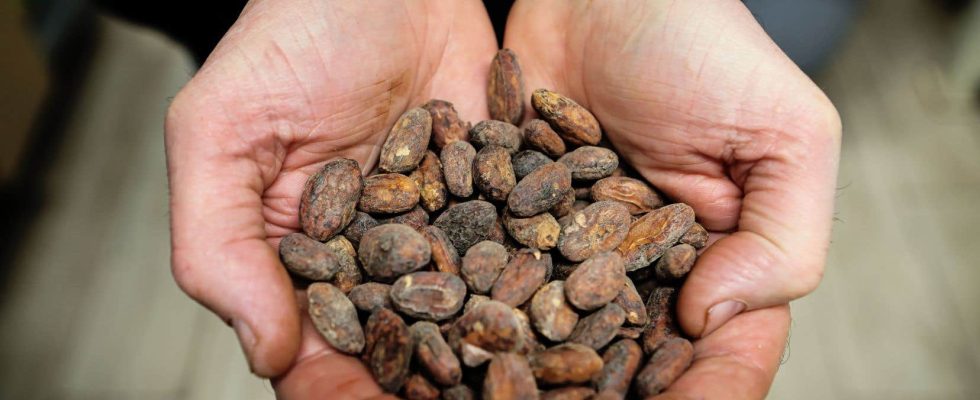Rising Easter chocolate prices after poor harvests halfway around the world are just the latest example of disruptions in the food supply chain, a trend that consumers are increasingly noticing, expert opinion.
“I think people are becoming more and more interested in where their food comes from,” said Sophia Carodenuto, a geography professor at the University of Victoria whose research focuses on global food systems.
Recent years have seen a number of high-profile disruptions, including a surge in lettuce prices attributable to flooding in California, a rise in orange juice prices due to poor harvests, and a rise in wheat prices linked to the war between Russia and Ukraine.
These kinds of disruptive events seem to be becoming more and more common, says Graeme Crosbie, senior economist at agricultural lending company Farm Credit Canada.
Futures contracts are a way to measure commodity prices based on contracts for future delivery, and a common way to track the prices of commodities like wheat, gold and oil.
A report from the agricultural cooperative bank CoBank, published in February, indicated that cocoa prices were almost 65% higher than a year ago and that futures prices in New York were at their highest level in 46 years.
Climate change and diseases
Bad weather and disease in West Africa have damaged crop yields, Mr Crosbie said, hurting supplies of products for Halloween, Valentine’s Day and Easter confections.
“The candy industry is going to bear the brunt of the margin impact from cocoa,” Steven Voskuil, Hershey’s chief financial officer, told analysts on a conference call in February.
Most cocoa, especially that found in many popular chocolate products, comes from West Africa, Carodenuto said. Ivory Coast, which she says produces about 40% of the world’s cocoa, has seen production decline by 30% over the past year due to climate change and disease, the professor says.
“It is one of the main drivers of […] this huge increase in prices on the raw materials markets,” she explained.
“I think we’re seeing this all over the world, that the rainy season and the dry season are no longer predictable like they used to be. »
Price increases
Unlike some crops, cocoa production is highly concentrated geographically, meaning much of the world’s supply is grown in a handful of regions, Graeme Crosbie points out. This makes the crop and its supply chain more vulnerable to disruption.
Cocoa prices are not directly reflected in retail prices, because there are many other elements than cocoa that make up a chocolate bar, explains the economist. But they are having an effect and he expects retail prices to rise.
According to inflation data from Statistics Canada, the price of confectionery products increased by more than 9% between January 2023 and 2024, compared to overall inflation of 3.4% for store-bought foods.
Michael Medline, CEO of Sobeys and IGA parent company Empire, told investors earlier in March that the grocer was seeing “significant” price increases from some of its suppliers that “will inevitably affect the customer “.
“This is largely because some commodities like sugar and cocoa continue to be highly volatile due to climatic and geopolitical factors that impact global supply,” he said.
Rising cocoa prices pose a hurdle for manufacturers who have already struggled with rising sugar prices over the past three years, Billy Roberts, senior food and beverage economist, noted in the release. CoBank press release.
“This could lead to further erosion of chocolate sales volume and start to impact dollar sales as well,” he said.
Consumers are increasingly aware of this type of disruption as food prices rise across the board, Crosbie said.
In a 2021 survey by Deloitte, nearly three-quarters of respondents said it was important to them to understand where their food comes from.
And cocoa is one of many food products that consumers are increasingly looking at critically.
Farmers who suffer
Cacao is native to Central America and grows naturally under a canopy of rainforest trees in a diverse ecosystem, recalls Professor Sophia Carodenuto. But vast tracts of rainforest in West Africa have been destroyed to make way for cocoa farming, meaning less ecological diversity and more vulnerable crops.
Higher commodity futures prices also don’t necessarily dictate the prices paid to farmers in real time, Ms. Carodenuto noted.
In Ghana and Ivory Coast, the largest cocoa-producing countries, the government sets a minimum price for farmers for the season, she explained. But the large multinational companies that buy and trade cocoa enter into futures contracts, meaning prices are agreed in advance.
It takes a lot of manual labor and investment to build a cocoa farm, so farmers need support, especially financial, says Ms. Carodenuto.
It is hoped that rising futures prices will lead to an increase in revenues next year, but that is not a guarantee, she added: cocoa prices are cyclical, meaning there will be probably a price drop at some point.
Consumers looking to make ethical spending decisions face a difficult choice, Professor Carodenuto points out, particularly given the price gap between premium, ethically sourced chocolate and popular market confections massive.
People don’t need to stop buying chocolate, she points out, but they can educate themselves and seek supply chain transparency by tracing the origin of the cocoa in a product.
Shoppers who can afford to spend more can also look for companies that specialize in sourcing ethical cocoa products, she adds.
In the long term, there is great potential to grow cocoa more sustainably, says Carodenuto, but this could lead to a drop in production in the short term.
“It’s just a question of who’s going to pay for it.” It should not be the most marginalized actor in the system. Small farmers should not pay for this. »
With information from the Associated Press
